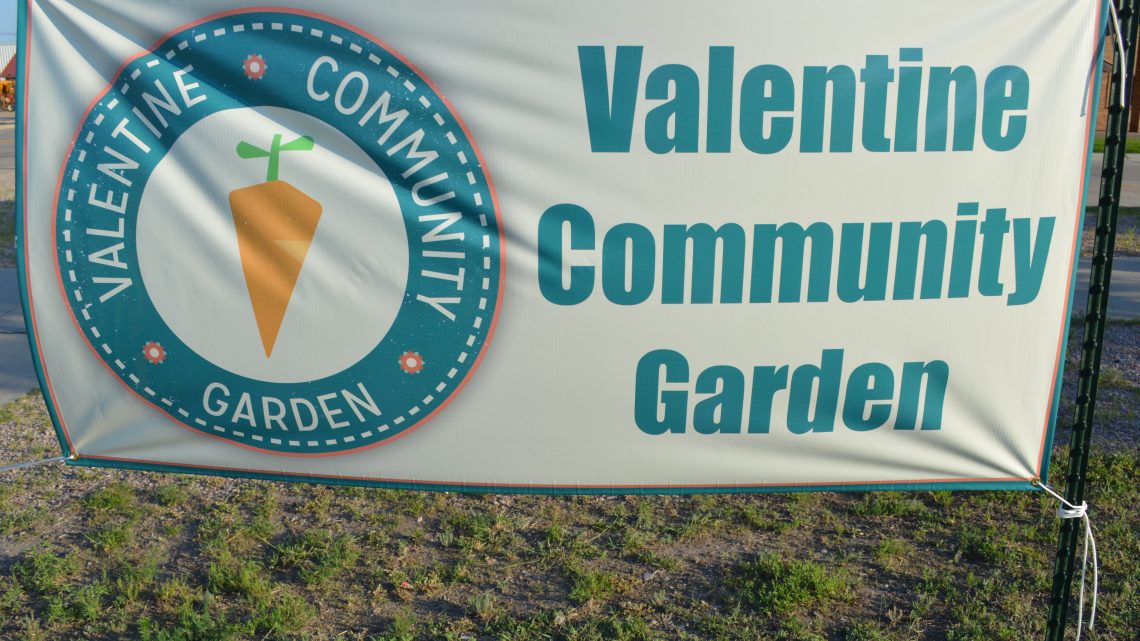OUTLOOK is always interested in what people are doing to encourage healthful living in their communities. Following is an interview with Pastor Joseph Carty, team leader for the Valentine Community Garden begun in the spring of 2013 in Valentine, Nebraska.
How did the community garden idea originate?
I like gardening and I love our health message. The desire to do a community garden started when I first found out about the Adventists Instep for Life program. For those who don’t know, Adventists In Step for Life is basically the Adventist format of the national Let’s Move program initiated by Michelle Obama.
There are basically three functions—an exercise portion, a portion about community service, and a portion about nutrition that is basically run through the community garden aspect. I loved the idea of a community garden and felt it was ideal for teaching our health message to children at church and in the community.
The only problem is that I pastor four very small churches. At one of our church board meetings I pitched the idea. My thought was that I could use this program as a major portion of our newly formed Pathfinder club for the summer. The church members all liked the idea, but they felt it was more work than the few of us were wanting to handle. So I basically just put the idea on the back burner. That is, until I found out about a similar program in our community called Just Run. It was very much like Let’s Move and Adventists Instep for Life except it did not have a portion about nutrition—and no community garden.
I volunteered to help with this program and loved it. I was somewhat in demand because I was one of the few men who volunteered. Anyway, working with Just Run helped me realize that even though our small church does not have the energy and resources to put on a program like Adventist Instep for Life on our own, we could make it a community project and involve everyone.
So the dream was birthed.
How did you “sell” the idea to sponsors?
It did take some time to come up with a pitch that flowed well. We are still in the process of perfecting our mission statement and defining our goals. But here is what we have so far:
“The Valentine Community Garden (VCG) will provide a hands-on learning environment for youth and adults in the community to learn about team work, agriculture, integrity and growing healthy food. The program will foster the spirit of unity for city beautification, sustainability and entrepreneurial concepts.”
Our four major goals for this first year are:
(1) Run a children’s educational program to instruct children about agriculture and personal choices
(2) Provide a number of plant beds for families and adults who would like a plot to work for themselves
(3) Use a percentage of all produce to sell in a farmers market (the money gained will be used to better the project)
(4) Have a large pumpkin patch from which we will sell pumpkins during the fall.
How did you go about organizing this project?
I asked around to see if anyone knew who else might share a similar dream. Then I began to contact these people. First was the University of Nebraska Lincoln extension office. The Cherry County 4H club was interested. I then made friends with a group called Niobrara Council Outdoor Education Program. Our group of three representatives began making plans. Eventually we gathered a couple other people and officially created a board, of which I became president.
From the beginning I wanted this to be completely community oriented. I did not want any one organization to take all responsibility. I did not want this to be only a 4H project, or an Adventist church project. I wanted the entire community to take responsibility for it.
The first step in the official process was to take the idea to city council. I asked them to consider three things: (1) donate a piece of city land for the garden, (2) pay for the monthly water bill, and (3) allow us to put a fence around the garden to keep out the many deer we have in the area. They happily granted all requests. This gave us the motivation to put even more energy into the project.
Shortly after this, a wealthy person in the community offered an even better piece of land that was more centrally located (right on the major highway through town). At this point we realized how God was blessing and that this project was going to be a reality. We began to publicize the garden on the radio, in the local newspaper and with posters around town. We encouraged local businesses to participate in the project by donating materials.
A local farming company donated nine semi-truck loads full of good dirt. A local building company donated $200 of wood. Local nurseries donated seeds and plants. The hardware stored donated locks for our fence. The other local building store offered $200 of fencing free and the rest at cost. The farm and ranch store donated fence posts at cost. The other local ranchers/lawn/garden store donated $200 worth of hand tools and hoses for the garden. Plus, the first elder of the Columbus Church,William Abbott, owns a sawmill nearby. He offered to donate a large amount of wood chips for the walking aisles. It was a bit uncomfortable encouraging everyone to donate, but in the end it certainly worked.
When the beds were ready, did you have a person with gardening experience to manage the actual planting and watering?
We do have experience gardeners leading the project. We received a list of people who were in the Master Gardeners program. We contacted each of them and asked if they would consider participating in teaching our kid’s program either on a weekly basis or occasionally during the summer.
Those who are on the board are also very hard workers. They helped do all the work of building the 30 plant boxes, putting up the fence, planting and watering.
We planted almost all the plants in one day and are working on an automatic watering system right now. In addition we have mulched the beds with lots of cut grass to keep down the weeds.
Do people rent certain portions of the garden to plant and harvest their own crops?
As mentioned above, half of the garden is in plant boxes and half is a pumpkin patch. We reserved eight boxes for the kid’s teaching program. The other 22 boxes are free to use. The only “charge” for the box is that they donate 25 percent of the produce to the Community Garden Farmers Market for us to sell for profit.
This is your first year and of course you haven’t sold any produce yet—so how did you pay for the necessary materials to get started (that were not donated)?
We applied for grants. We have received three grants to date, each for the value of $1000! One is from the local youth department called “Turner Grant,” one is from Dupont Pioneer Seed Company, and one came from the local Adventist Church. This was enough to get us started. We hope that we will make enough from selling produce this year that we will not have to apply for too many grants for next year.
How did you learn about and obtain the grants? Are they government grants like the People’s Garden Grant?
We discovered the Adventists Instep for Life website had many available grants listed. Most of these grants are private companies and the key is to apply very early. Many of the organizations must have your application by August even though they don’t send the money until March.
The second source of grants we found was through our local University Extension Office. They have special grant offers through state and government options that we may not have come across otherwise.
What advice can you give others who are interested in starting a community garden project?
It’s really important to make the right connections. Find like-minded people to help from the beginning. Invite the city, local companies, and youth groups to participate. And start very early. We really had to push hard to come up with the idea in March and have everything planted by the first week of June. If I were to start all over again, I would start planning in June of the year before. This will give you enough time to apply for grants, make the right friends and do the work necessary.
Joseph Carty pastors the Valentine, Gorden, Hyannis and Springview churches in western Nebraska.
Brenda Dickerson is managing editor of OUTLOOK magazine.










